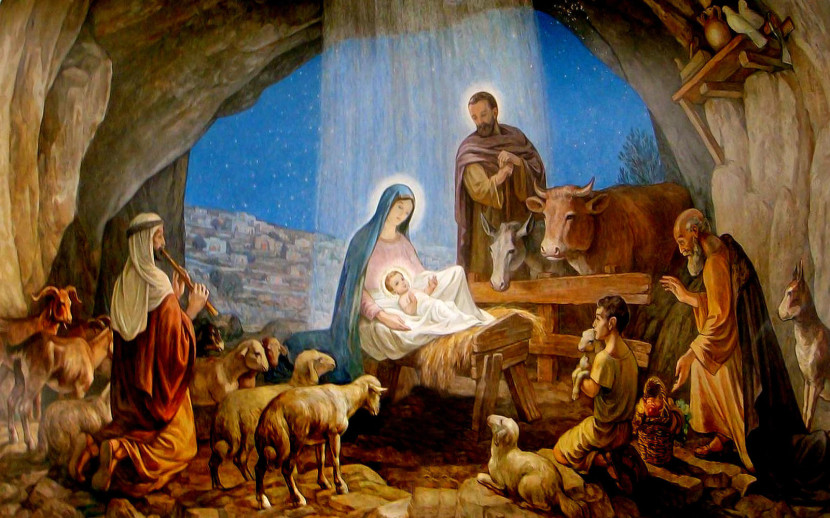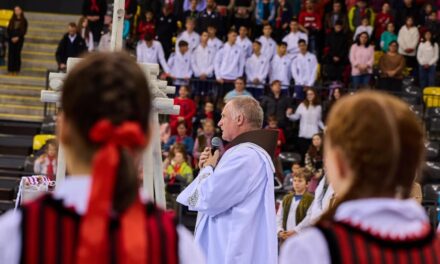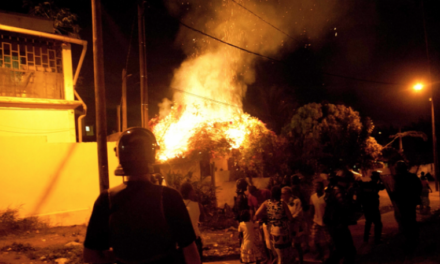A nation that does not know its past does not understand its present, and cannot create its future!"
Europe needs Hungary... which has never let itself be defeated.
The Story of Santa Claus and Christmas Part 1
An introductory thought! In recent decades, including the past thirty years, the December holidays have been a confused mess even in the minds of people of good faith. Advent, Santa Claus, Father Christmas, the birth of baby Jesus, Christmas, the Christmas tree, giving gifts, mean almost the same thing. let's try to put the listed holidays in their place, if only in outline
The mentioned concepts should be immediately explained in one sentence. Advent. The word means "arrival" and the 24-day period of "waiting". Its first day is the fourth Sunday before Christmas. We light the first candle then, which falls on the end of November or the first day of December. (For children, the 24-part Advent calendar provides a suitable learning method.) Santa Claus. It originates from the name of Saint Nicholas, the bishop of Myra in Asia Minor. The symbol of selfless, "secret" gift-giving, hence the children's dear Uncle Santa Claus. Only one day, December 6th, is associated with Santa Claus. Santa. It is a communist invention that denies Christianity and wants to erase even the name and memory of Saint Nicholas. Santa is not Santa!
Christmas. The day of Jesus' birth, December 24, and the following two holidays. At Christmas, the "gift" is not brought by Santa Claus, and especially not by Santa Claus, but by baby Jesus.
The greatest gift is the birth of the Savior himself. Fir festival. A communist confusion similar to Santa Claus , to erase the essence of Christmas, the most beautiful mystery of European Christian people, from our consciousness.
Big Christmas
Nagykárácsony is a settlement in Fejér county, in the Dunaújváros district. It owes its national fame to its name, as the holiday postcards sent from here before the Christmas holidays are of special importance. This "privilege" is validated by the stamp of the Nagykáracsony post office and its imprint. For years, student groups, families, and collectors have been visiting Nagykáracsony during Advent to make the celebration of the birth of Jesus more meaningful and memorable.
The Kunos settled the area in the 13th century, who for centuries were engaged in shepherding, farming, and industrial activities. In 1702, the village was already referred to as Karácsonyszállás. The name refers to the fact that after the summer grazing period, the shepherds gathered here for winter accommodation and celebrated the successful year at Christmas time. This is how the Pre-housing became the Christmas Housing. However, the celebration took place with the observance of Christian religious ceremonies - honoring the birth of Jesus - which was checked by the manor administrator. The pastoral peoples were happy to keep the pastoral (nativity) folk customs, which were increasingly organized around the chapel and then the church that grew out of it. The current name of the village, Nagykarácsony, was born in 1952, when the people of the farms and wastelands were forced to move to the central settlement. After its name, the village formed during the wildest cancer years became a settlement that, if the communist leadership of the time had guessed, they would probably have given a different name to the center of the accommodation. That was an own goal!

Christmas movie
A few days ago - on November 25, 2021 - the first Hungarian cinema film was shown, which is an aftershock of the somewhat trite Anglo-Saxon works of Christmas stories, but nevertheless Hungarian. If for no other reason, the work titled Christmas is undeniably domestic, with the wonderful background lights and photography of Budapest. This rom-com (romantic comedy), or rather "romantic comedy" in Hungarian, presented during the Advent period, received the mandatory good reviews from the press on duty. This was ensured by the old and newly deployed "humor cannons" of the director and cast. The Great Christmas is mentioned among the movies on Netflix, which leads us to conclude that it will not be mentioned at the midnight mass - in Hungary, we can still be sure.
The secret of Bethlehem
The place of Jesus' birth can be linked to the city of Bethlehem in the West Bank, today in the territory of Palestine. The ancient settlement is located only ten kilometers from Jerusalem, which belongs to Israel.

The story of Christmas began in the city of Bethlehem. The Eastern Church links the place of the birth of the God Child to a cave, and the Western (Latin) Church to a stable. This beautiful story, which is connected to the essence of Jesus' teaching, the support of the poor, the sick, children, and the downtrodden, has been deeply embedded in the consciousness of the Christian man over the course of two thousand years. Among the four evangelists, Mark and Luke do not even mention the birth. Matthew, on the other hand, wrote: "During their stay in Bethlehem, the time of childbirth came. Mária gave birth to her first-born son, wrapped him in swaddling clothes and laid him in a manger, because there was no room for them in the inn." In addition to Jerusalem, Bethlehem is also considered the city of David by the followers of the Old Testament, from which it "naturally" followed that the Savior came to this world in this city.
The birth of Jesus was a joy not only for the poor shepherds, but also for the rich, as well as for the wise men from the East. This is how the Gospel of Matthew describes the birth story. “The star they saw in the east led them until it finally stopped over the place where the child was. They were very happy when they saw the star. They entered the house and saw the child with his mother Mary." The reality, which according to some researchers differed in many ways from the romantic story, is quite different. According to them, it could not have happened, for example, that Mária and József could not have found suitable accommodation for a mother about to give birth in Bethlehem. After all, the inhabitants of the small town knew well who József was, and even knew that he was a descendant of David.
The mystery of Christmas is most beautifully illuminated by the Gospel quote (Jn 3:16): "God so loved the world that he gave his only begotten Son, that whoever believes in him should not perish but live forever."
Authors of Silent Night
Josef Mohr , the simple Austrian priest, and Francz Gruber met and became friends in 1818. The Austrian residents of the area around Salzburg, hit by the Napoleonic wars, lived in abject poverty, often almost starving. This was also the case in Obendorf, where even the organ of the village's small church broke down on Christmas Day. The priest of Obendorf, Josef Mohr, asked his friend to find a melody for the text he quickly wrote, so that the people of the village would not be left without Christmas spirit. Gruber did this, and Josef Mohr, having no other
instrument than a guitar, played the melody of Silent Night on it and sang the lyrics along with it.

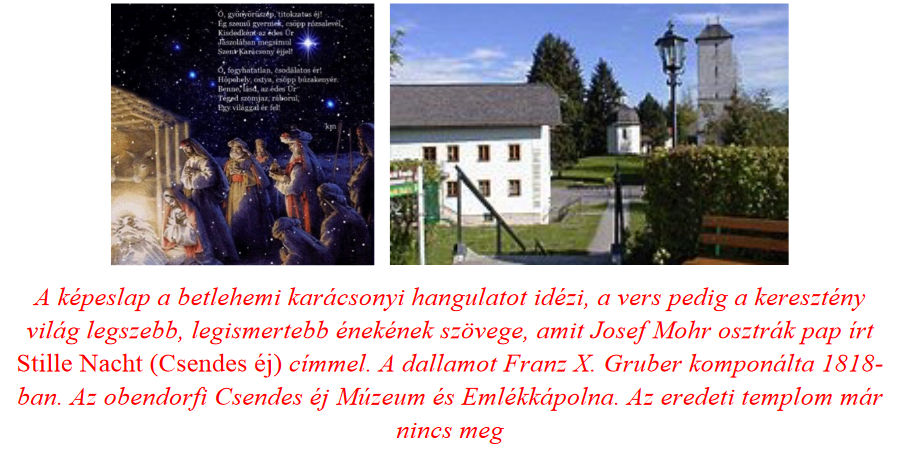
The birth of Christmas
The first Christmas was celebrated in the capital of the Roman Empire on December 25, 336. That this could happen was decided at the First Council of Nicaea in 325. It has been known for centuries that Jesus' birth did not fall on December 25. On this day, the pagans presumably celebrated light, the birth of the Sun. (In the Roman world, the winter solstice - the period between December 17-25 - was the festival of Saturnalia, when people paid tribute to the god of agriculture. Christmas is connected to these days, which was also a celebration of gift-giving and joy. The Romans built the temples it was decorated with green plants and lamps, which may have been the origin of the symbol of Christmas /the green pine tree/.) According to Christians, Jesus is the light itself, since he is the one who defeated the darkness. This is how the person of the Savior connected the pagan and the Christian holiday, which then became one of the biggest, but certainly the most intimate, family holidays among us Hungarians.


Martin Luther's Christmas
According to some researchers, the first Christmas was celebrated in 521 in York, England. After that, however, more than a thousand years had to pass before the first Christmas tree was erected. It was Márton Luther, the reformer who caused the schism , who, according to legend, greeted his own child with a pine tree in 1536. The Christmas tree - the tree in the middle of the Garden of Eden - is a symbol of God's acceptance of all people into Paradise, regardless of whether they have done good or bad in their lives. Whoever it is, it does not decide where they belong according to their origin, religion, or gender.

Teresa of Brunswick
The first Christmas tree in Hungary was erected by Teréz Brunszvik in 1824 in Pest, according to other sources, in Martonvásár. However, the Bezerédy and Podmaniczky families also played a major role in introducing the Christmas custom. In Hungarian literature, Mór Jókai spread the knowledge of the Christmas tree when he published his story The Beggar's Child in 1866. (It is worth noting that the Christmas tree, or more precisely the concept of the "Christmas tree", was already known in the 17th century. However, this was not the pine tree representing the birth of Jesus. It can be proven that in many areas of Transylvania, landowners distributed firewood to poorer families at Christmas. )

Christmas curiosities
The Christmas tree claim was arguably first made in Germany. The beautiful custom soon took root in Vienna, where it was spread by a family that moved from Berlin in 1814. In Europe, however, this "strange custom" became common only three decades later, when Queen Victoria made it fashionable. It happened that in 1846, in a drawing published in a newspaper, the Queen of England, the ruler of the British Empire, was depicted with her family standing next to the decorated Christmas tree. If anyone else had done this, this Christmas fashion would not have spread almost like wildfire in the Christian world. But the person and example of the Queen of England was a landmark in the territories dominated by the Anglo-Saxons, who had already become a factor in world domination. It can also be said of Queen Victoria that the sun never set in her empire.
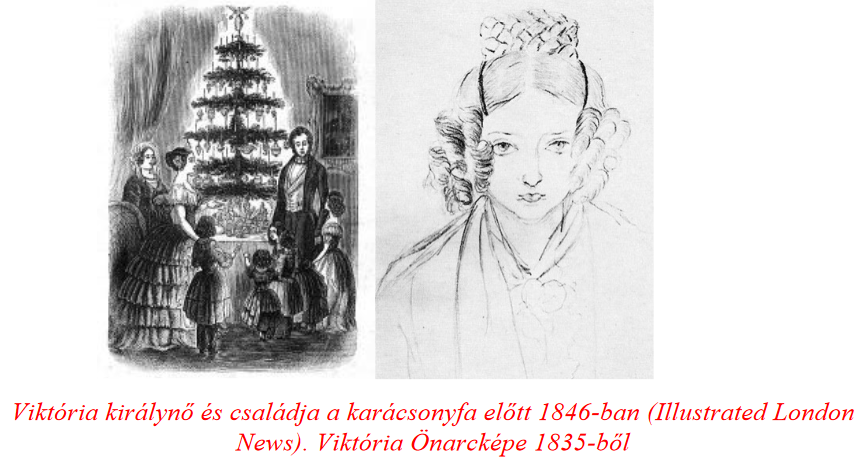
A beautiful event and initiative of Christmas is linked to Saint Francis of Assisi who lived in the 13th century. It is thanks to him that Christmas carols began to be sung in family homes and churches.
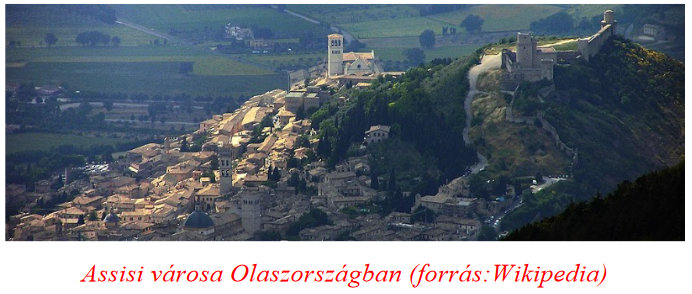
This custom was passed on in the Hungarian-speaking areas, for example, in nativity scenes. In European countries, many beautiful traditions of Christmas, which are also known in our country, are the 10th-12th. was formed in the century. For example, the gifting of tangerines, apples, and walnuts spread from France. The ancestors of bacon sugar were made by the French and the Germans. However, given that a master confectioner from Hamburg, Frigyes Stühmer , settled in our country, and he created the uniquely packaged candy that can be hung on a tree, salon sugar, we count it among the Hungarian sweets. If only because since the 19th century, it became customary only in Hungary to include candies on the Christmas tree. Let it stay that way! (Unfortunately, it is already becoming a habit here, perhaps out of fashion, perhaps out of convenience, to place the brown sugar in a bowl under the tree.)
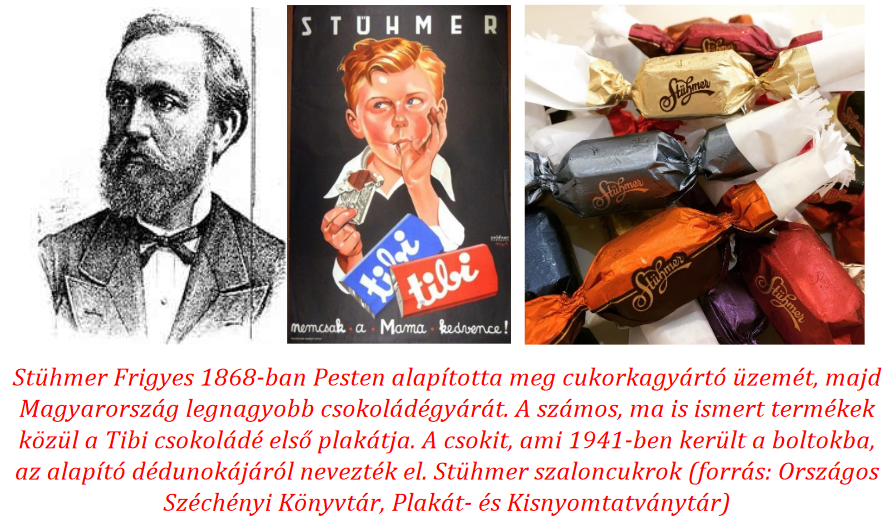
Christmas, despite its simplicity, was associated with a number of events, material, artistic and religious elements that varied from age to age, people and country. These include the person of Santa Claus, candles, decorations, gift-giving, family gatherings, church ceremonies, and the colorful superimposition of folk customs.
The story of Santa Claus
Saint Nicholas is known all over the Christian world . The Saint of Myra is highly respected by both Eastern and Western Christians. The sixth of December is the feast of St. Nicholas. The day the bishop died in 342 in Myra. Born in Anatolia in 245, the child soon became an orphan, but inherited a huge fortune from his parents. The young man who chose the priestly life, the monastic world, was elected bishop in Myra, which was thanks to a lucky coincidence.
After the death of the previous bishop, the bishop selection board made the decision to elect the person who entered the church gate first thing in the morning. This man was young Miklós. No one else could have been more suitable for this position than him. used his wealth for charitable purposes, thus becoming a role model of giving love. He is also the patron saint of sailors, merchants, fishermen, pilgrims, and girls getting married. He held the position of chief pastor in Myra for more than half a century, during which time he helped countless people with teaching, wise advice, money, and food. There are many legends about his life, and among other things, the role and personality of Santa Claus is also related to such an event.
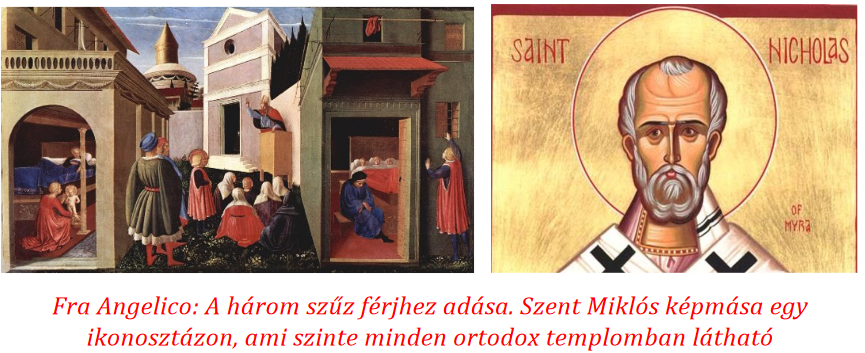
It happened that one of his impoverished neighbors had three beautiful and young daughters. In his final desperation, the father had already come to the decision to use his daughters in order to improve the fate of the family. He was just about to send them out into the street, when Miklós - upon learning of the father's decision - secretly threw so much money through the window into the house of the girl's family at night that he saved the family from shame and deprivation, and even luckily the family was able to marry the girls off. . This was followed by many similar actions, and Miklós spent his entire life in this spirit. This gave rise to the cult of Santa Claus , which can already be classified as folk customs. The name Mikulás is the Slovak and Czech nickname for Miklós. A person with a big beard, fur, red cloak, hat, and boots appears in the culture of almost every nation, who has become a symbol of gift-giving.
Santa Claus - Santa Claus on the 20th-21st. century
The figure of St. Nicholas merged with the Christmas holiday. December 6 is already part of the Advent holiday cycle, and Santa Claus, the gift-giver, is a popular Christmas figure. That is why, especially in the 20th century, certain cultural circles - primarily the great powers that enforced special rights for themselves - distorted the meaning of the mystery of Christmas through the person of Santa Claus. The Soviet Union and the United States were at the forefront of this.

Saint Nicholas was highly revered in Tsarist Russia. After all, in cities and villages, the names of their churches, their ecclesiastical art, and the teachings of the priests place Saint Nicholas in the center. The Byzantine customs had a strong influence even in Hungary, primarily through the helper saint. After all, from Gyergyószentmiklós to Kunszentmiklós to Fertőszentmiklós, dozens of settlements and hundreds of churches bear the name of Saint Nicholas. Precisely for this reason, because Miklós was so deeply embedded in the souls and consciousness of the people, the communist system tried to forget even his memory. This is how, from the 1950s (in the Stalinist regime), Santa Claus became Santa Claus (Gyed Moroz, i.e. Father Frost), and Christmas became a Christmas tree festival.
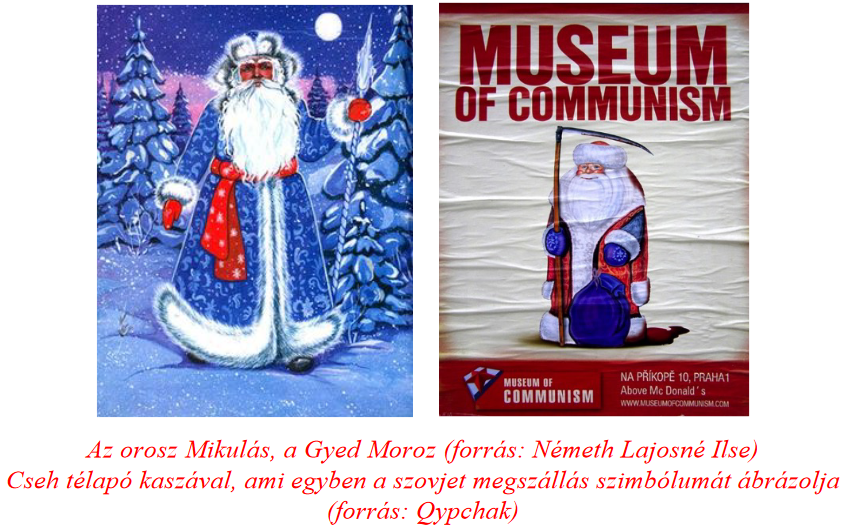
Since the 1950s, every schoolchild in our country has sung the popular children's song Hull a pelyhes behér hó,/Come dear Santa./Every child is waiting,/the sound of a cheerful song is heard. Its author is Ernő Rossa , who is known for songs ranging from the Lenin song to the Workers' March and Harsan a kürtszo and many other songs. Ernő Rossa talentedly served the Soviet system with well-known movement songs for children and young people .
In America, Santa Claus is the name of Father Christmas, which is already a distorted version. This name was spread by Dutch settlers in their new homeland at the end of the 18th century. The Protestant Dutch still Sinter Klaas (Saint Nicholas) and dedicated their Christmas holiday to him, which was later distorted in American public life to the aforementioned Santa Claus. Already in 1809, the story was born, according to which Santa Claus, who rides on a flying sleigh, brings gifts, and has a big beard, became a favorite figure of children. This custom took strong root primarily in the Anglo-Saxon countries and Protestant areas, which was also appropriated by the business life and the money-minded system.
The overly ornate, rather kitsch Christmas lighting you can see in the movies is about money and the value of the gift, not about the essence of Christmas. From Santa Claus to Santa Claus, the "tear-touching" American Christmas - especially his film creations - wreaked the same havoc on people's souls as the Soviet Santa Claus. The sleigh drawn by reindeer flying through the air, on which Santa Claus brings the gift down the chimney, also spread through American films. However, let's add that the Protestant customs of the Northern European immigrants come to life in this.
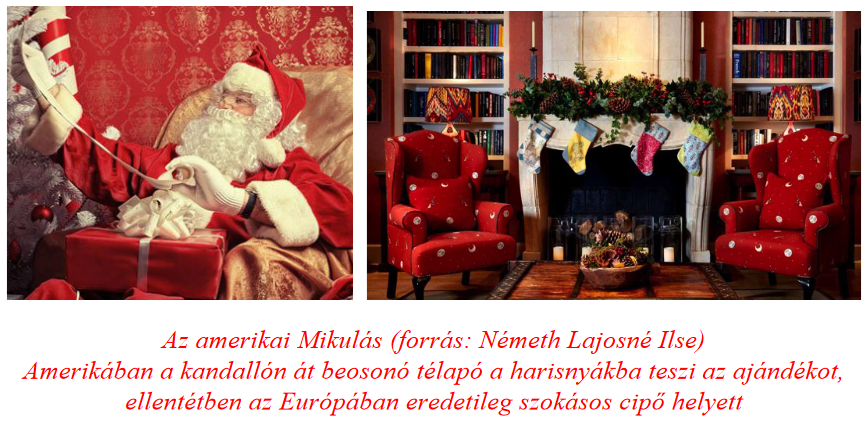
In the majority of socialist countries, the day after Christmas was even deleted from the calendar as a public holiday. If it was possible and necessary to celebrate, then Stalin, born on December 18, was placed in the place of Santa Claus and Jesus. In our country, the traditional Christmas could be celebrated in the original way from 1988. In most schools, nativity scenes started again at that time.
The fight over the ideological content of the names Santa Claus and Santa Claus has not ended today. Santa Claus is a product of the ideology of the Soviet system. Although those who deny this point to the fact that the Gyed Moroz /Fagy apó/ existed long before the communist era. This is true, but it is also true that behind the name Mikulás is the figure of Saint Nicholas, and he had to be eliminated from the consciousness of school children. This was achieved in the half century after the war, and when a school or a teacher dares to stick to the name Santa Claus again, they commit the forgery. (This is like, for example, the change in the name of Széll Kálmán tér – Moskva tér – Széll Kálmán tér. The list could be continued endlessly.)

A special mention should be made of the "real Santa", the Finnish Joulupukki , which means "Christmas goat" in Finnish. The name is not even a hundred years old, since the Finns heard about it for the first time in 1927, on a radio program. Joulupukki lives in Rovaniemi. The settlement is located in Lapland. It even has a mailing address where children can write to Santa Claus about what kind of gift they would like. The Finnish Christmas goat was originally a well-known figure of Nordic pagan myth, and also a symbol of child punishment. Only later (1927) did he transform into the lovely Santa Claus.
The figure and popularization of the Finnish Santa Claus has become an integral part of business life. He traveled by plane to every country to which he was invited, of course he undertook his roles armed with lucrative contracts. According to the latest news , the Finnish business has reached a low point, which was caused by the virus and the Islamic threat, among other things.
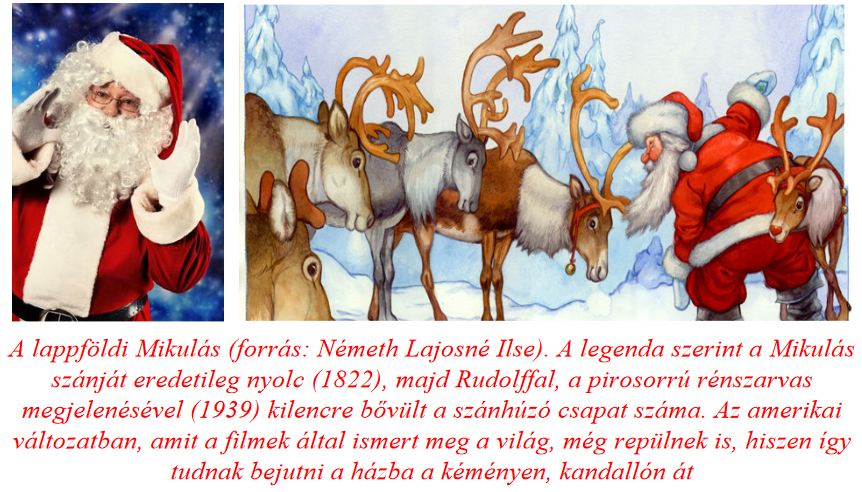
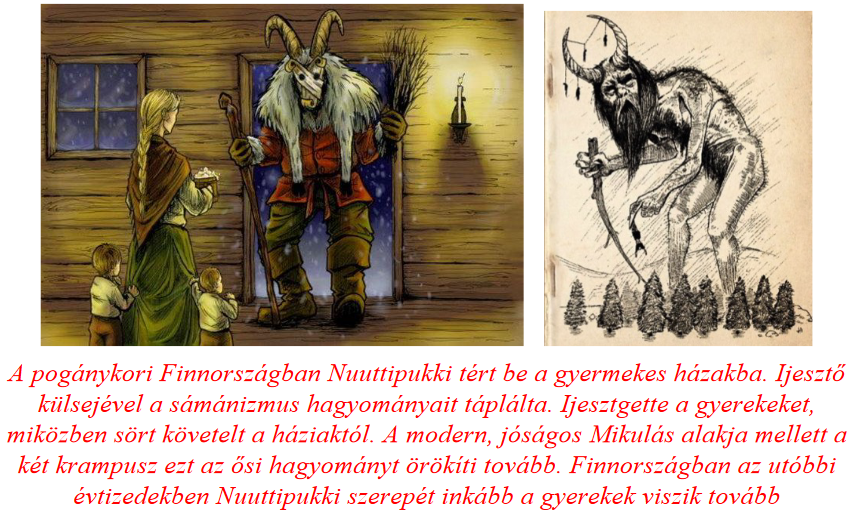
The popularity of Santa Claus, the figure of the kind, gift-giving, big-bearded old man in red clothes, did not stop at the borders of the Christian world. Perhaps not with similar content and religious background, but Santa Claus is known and celebrated in Japan, China and Morocco, for example. The latter is interesting and unusual, since it is an Islamic country.
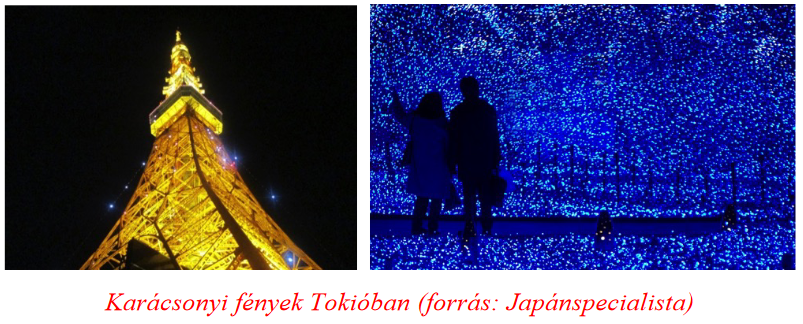
We present the Japanese Christmas as an example. Given that only 1% of the country's population is Christian, it is not a religious holiday in the island country, but rather about family, social and community gatherings. (It is considered a shame if someone spends Christmas alone, which is only celebrated on December 23. Why on this day? Because it was Emperor Akihito's birthday.) Christmas in Japan is not without gifts either, but it is narrower than what we are used to. At most, the children will receive a gift. The artificial pine tree is decorated with traditional Japanese decorations: lanterns and fans. The biggest holiday is the New Year. The holiday menu is chicken, especially chicken from the Kentucky store chain, which is almost a tradition, even though it hasn't been half a century since food businessmen came up with it. In addition to tea, the Christmas cake is indispensable, which also has a history of only half a century.

Author: Ferenc Bánhegyi
The parts of the series published so far can be read here: 1., 2., 3., 4., 5., 6., 7., 8., 9., 10., 11., 12., 13., 14., 15., 16., 17., 18., 19., 20., 21., 22., 23., 24,, 25., 26.

